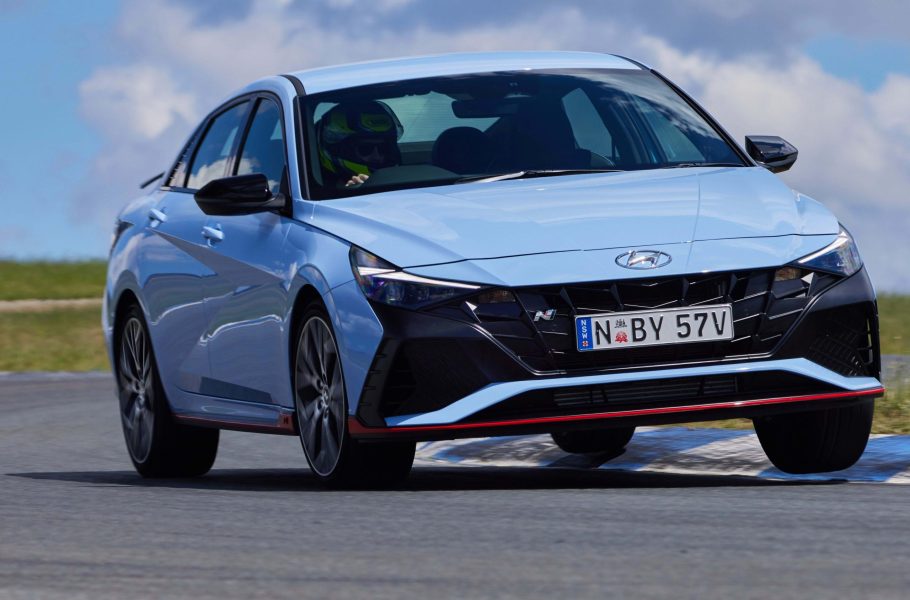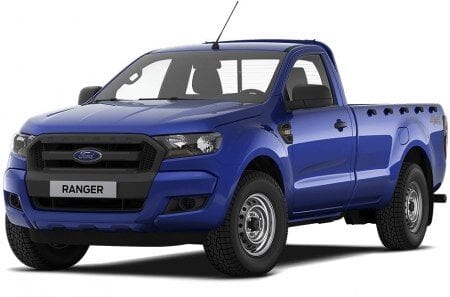
Review Hyundai i30 2022: sedan N
Content
- Does it represent good value for money? What functions does it have? 8/10
- Is there anything interesting about its design? 8/10
- How practical is the interior space? 8/10
- What are the main characteristics of the engine and transmission? 9/10
- How much fuel does it consume? 7/10
- What safety equipment is installed? What is the safety rating? 7/10
- How much does it cost to own? What kind of guarantee is provided? 9/10
- What is it like to drive? 9/10
- Verdict
The performance-focused Hyundai N sub-brand survived the crash of the year in 2021 by aggressively expanding its lineup across multiple segments.
It comes just a few years after the Korean giant entered the market to critical acclaim with the original i30 N hatchback, and the family now includes the smaller i20 N, the Kona N SUV, and now this car, the i30 Sedan N.
Perhaps the best part about the sedan is that it doesn't make sense. The i20 is destined to win the hearts of young riders, the Kona is a special move by market genius ahead of the crowd in the looming hot SUV boom, but this sedan? It's just Hyundai flexing its corporate muscles to please as many enthusiasts as possible.
But can lightning strike four times? After a flurry of launches this year, can this left-handed sedan deliver the same magic as the rest of the N family? We took one on and off the track at the Australian launch to find out.
| Hyundai I30 2022: N Premium with sunroof | |
|---|---|
| Safety Rating | |
| engine's type | 2.0 L turbo |
| fuel type | Premium unleaded gasoline |
| Fuel efficiency | 8.2l / 100km |
| Landing | 5 Places |
| Price from | $51,000 |
Does it represent good value for money? What functions does it have? 8/10
The i30 Sedan N comes in one single price variant no matter which transmission you choose. At $49,000 before travel expenses, that’s an impressive value too: only a few thousand dollars more than the sunroof version ($44,500 with manual transmission, $47,500 with automatic), and yet it’s all still inferior to competitors.
It also gets a hardware increase above the hatch as well as further performance improvements, but some items (like forged alloys) are sold. Hyundai tells us this is because the sedan and hatchback come from different factories, the hatchback is from Europe while the sedan is from South Korea.
The i30 N sedan costs $49,000.
The high-performance equipment you're really paying for includes the same famous 2.0-litre four-cylinder turbo engine from the hatch, the N-specific eight-speed dual-clutch automatic transmission, or a heavy-duty electronically controlled six-speed manual transmission. controlled and locally tuned multi-mode sports suspension, more powerful brakes than the standard sedan, Michelin Pilot Sport 'HN' tires designed specifically for Hyundai N products (they replace the Pirelli P-Zero tires that come on the hatchback), new built-in a drive axle that is said to come from the Hyundai WRC program.
The N sedan wears 19-inch alloy wheels.
The latter is said to make the front end of the N sedan stiffer and lighter, and of course there's an electronic limited-slip front differential to keep things under control in corners. They are great, we will talk about them in more detail in the main part of this review.
Standard comfort includes 19-inch alloy wheels, two 10.25-inch screens (one for the dashboard, one for the media screen), wired Apple CarPlay and Android Auto, a wireless phone charger, and a synthetic leather steering wheel. and seats, driver power adjustment with heated and cooled front seats, dual-zone climate control, keyless entry and push-button ignition, LED headlights and rain-sensing wipers.
The instrument panel is fully digital and measures 10.25 inches.
The biggest feature of this car for the intended buyer, however, is the included track maps and set times. This great feature, accessed via the "N" button in the main menu, will use the built-in navigation to automatically detect when approaching a race track, display a map of the track, and start a lap timer. It will show you where you are and even automatically track laps based on the location of the start line. Genius move!
This feature will support a few Australian circuits at launch, but Hyundai will add more over time and be able to display them.
N has track maps and set times.
The only options the Sedan N can be equipped with are limited to premium paint ($495) and a sunroof ($2000). Security is also good, but it lacks some key points, which we will cover in the relevant part of this review.
This level of equipment is great, considering the sedan's additional cabin specs are higher than those of the hatch, bringing the equipment level closer to that of its closest rival, the Golf GTI ($53,100) and well above that of its closest sedan, the Subaru WRX. (from $ 43,990 XNUMX). Hyundai continues to have a fantastic position in this segment.
Is there anything interesting about its design? 8/10
I wasn't convinced by the i30 sedan's edgy new look when it replaced the Elantra, but I think this version of the N sells the design by balancing out all of its otherwise unsettled angles.
It starts at the front with aggressive bumper treatment. The new grille extends to the edges of the car, trimmed in contrasting black plastic, highlighting the width and the new low-profile N variant. This draws your eye to the grey/red lighting strip that runs through the car's frame, once again emphasizing its low profile and sharp edges.
The front bumper has undergone aggressive processing.
For me, however, the best angle of this car is now from behind. Otherwise clunky as standard, the leading waistline from the doors is now nicely balanced with a real spoiler finished in contrasting black. I say "true spoiler" because it's a functional part that stands apart from the bodywork and not just a detailed lip, as has been the trend even for high performance models in the last few years.
The lightweight profile looks angry and perfectly balances out the sharp line that runs through the boot. Again, the width is accentuated by a contrasting black rear bumper that draws attention to the massive tailpipe trim and alloy wheels that really fill those rear wheel arches. It's cool, cool, interesting. Additions that I would not normally compare with the lower classes of this car.
The N sedan's best angle is at the rear.
Inside, the more analogous and symmetrical feel of the hatch is replaced with a more driver-focused and tech post-modern vibe. A single piece of fascia for the dashboard and multimedia functions is angled towards the driver, and there is even a plastic fascia that separates the passenger from the center console. It's a little odd and finished in hard plastic, hardly comfortable on the passenger's knee, especially during the spirited driving that this car encourages.
Interior design is attractive to the driver.
While the design is attractive to the driver, there are some areas where you can see that this car is built at a price point that is clearly lower than its Golf GTI competitor. Hard plastic trim adorns the doors and center bulkhead, as well as much of the dashboard. Things are even worse in the back seat, where hard plastic is found on the backs of the front seats, and there are no soft pads on the armrests of the rear doors.
At least the micro-suede-trimmed seats with signature "Performance Blue" stitching and N logos look and feel part of it.
How practical is the interior space? 8/10
Practicality is mostly great thanks to the Sedan N's shape and large dimensions. The front seat feels a bit more enclosed compared to the hatch thanks to its driver-centric design, and the lower-profile armrest door bottle holders are next to useless for anything more than a standard can.
However, there are two huge bottle holders on the center console, as well as a decent-sized armrest box and a useful cutout under the climate unit for loose items or for charging your phone. Interestingly, the N sedan lacks USB-C connectivity, which is conspicuously absent from most current Hyundai products.
The front seat feels a bit more enclosed compared to the sunroof.
What I love about the front seat is the brilliant shifter position, whether automatic or manual, and the amount of adjustment afforded to the driver is great for the steering and seats. Too bad the sedan can't be fitted with the low-slung and beautifully upholstered cloth bucket seats available in the sunroof.
The biggest practicality benefits for the Sedan N can be found elsewhere. The backseat offers free space for a 182cm man behind my driving position, and headroom is also quite passable despite the sloping roof. There are good seats, but storage space is limited: there's only a small bottle holder in the door, one mesh on the back of the front passenger seat, and no fold-down armrest in the center.
The back seat offers a royalty-free amount of space.
Rear seat passengers get a set of adjustable ventilation vents, a rarity in this class of car, although there are no power outlets for rear passengers.
The trunk is a whopping 464 liters (VDA), rivaling some midsize SUVs, not to mention this car's sunroof rivals. Even the three-box WRX is a little short of 450 hp. However, as with the WRX, the loading opening is limited, so while you have plenty of room, loading bulky items like chairs is best left to the hatchback.
Trunk volume is estimated at 464 liters (VDA).
What are the main characteristics of the engine and transmission? 9/10
Hyundai's well-established 2.0-litre turbocharged four-cylinder engine reappears in the N sedan with hatchback-like output of 206 kW/392 Nm. It outperforms its direct competitors, though there's another level of performance above that that cars like the Golf R now occupy.
This engine sounds and feels good, with plenty of low end torque and what Hyundai calls a "flat power setting" that allows peak torque to range from 2100 to 4700 rpm as power gradually increases into the rest of the rev range.
The 2.0-liter turbocharged four-cylinder engine develops 206 kW/392 Nm of power.
It pairs beautifully with both the updated six-speed manual transmission and the new eight-speed dual-clutch automatic transmission, which is quite different from the seven-speed transmission used in other Hyundai models.
This automatic transmission even has an intelligent overrun function to smooth out the worst dual clutch characteristics, such as hesitant response and low-speed jerks in traffic.
The i30 N sedan can sprint from 0 km/h in 100 seconds with a dual clutch or 5.3 seconds with a manual transmission.
How much fuel does it consume? 7/10
Regardless of transmission choice, the i30 Sedan N has a claimed combined fuel consumption of 8.2 l/100 km. That sounds right to us, but we can't give you the actual number from this launch review as we've driven different cars in a wide variety of conditions.
Like all N series products with this engine, the N sedan requires 95 octane mid-range unleaded gasoline. It has a 47 liter tank.
What safety equipment is installed? What is the safety rating? 7/10
The Sedan N has a decent array of active equipment, but like its hatchback, it's missing some key elements due to design limitations.
Standard equipment includes automatic emergency braking (AEB) at city speed with pedestrian detection, lane keeping assist with lane departure warning, blind spot monitoring with rear cross traffic alert, driver attention warning, high beam assist and a safe exit warning.
The AEB system is limited and lacks some features, since the N version of the sedan cannot be equipped with a radar complex and only works with a camera. Crucially, this means it also lacks features like adaptive cruise control, cyclist detection, and cross-country assistance.
The N sedan also only gets six airbags instead of the seven available on the hatch, and at the time of writing, ANCAP has yet to be rated.
Warranty and safety rating
Basic Warranty
5 years / unlimited mileage
guarantee
ANCAP Safety Rating
How much does it cost to own? What kind of guarantee is provided? 9/10
The i30 Sedan N is covered by Hyundai's standard five-year, unlimited-mileage warranty. Why such a high score when the sister Kia Cerato sedan has a seven-year warranty? Two main reasons. First, service during that five-year warranty period is ridiculously cheap for a powerful car, costing just $335 a year. Second, Hyundai even lets you drive this car around the track at occasional events, change wheels and tires, and still keep the warranty (within reason).
The N is backed by Hyundai's five-year, unlimited-mileage warranty.
Obviously, we'd advise you to read the fine print before moving on, but the very fact that you don't rule out direct use of any tracks is outstanding in our books.
What is it like to drive? 9/10
The N sedan immediately impresses with the key elements that made the hatchback so attractive front and center. The layout of the cabin, the instantaneous reaction of the engine and the sound atmosphere let you immediately know that you are in for a pleasant ride.
Obviously this car is fast in a straight line, but both transmissions make it easier to apply that power to the ground. The same can be said for the new Michelin tires that work with this brilliant differential to make cornering a pleasure.
The steering is filled with feel no matter which driving mode you choose.
I wouldn't call it scalpel precision, as you can feel the electro-mechanical magic at work trying to curb understeer as well as some rearward play, but perhaps that's what gives these N cars their greatest quality, they're brash. .
The ESC and differential work together with the computerized driving modes so you can have some fun and drive this car on the track and rein it in before it gets really unsafe. The exhaust is loud, too, but only obnoxious in sport mode, complete with the shift-clicking noise that the original N-hatchback has become known for.
The N sedan is fast in a straight line.
The steering is filled with feel no matter which driving mode you choose. I'm not sure why it's so great on these N models, because it's overly computerized elsewhere (on the new Tucson, for example). While sport mode reinforces the situation, I've never had the feeling in a sedan that it's just a computer pushing me back.
The gearbox, with its continuous-on feature and smooth shifting, may not be as quick as something from the VW Group, but it can be used in a wider range of scenarios, which is another area where I think this sedan particularly shines. .
The exhaust is loud, but obnoxious only in sport mode.
The depth of its driving modes is also impressive. With adjustable steering, suspension and transmission, it can be calm enough to make daily commutes enjoyable while still allowing enough safety gear to be turned off to hit the track once in a while. Isn't that what it should be for such a machine?
Verdict
The N sedan is another victory for Hyundai's N division, which knocked it out of the performance offering last year.
A daring track champ with all the comfort and adjustability to make the ride home enjoyable. Where the sedan differs from its hatchback and Kona SUV brethren is practicality with a large rear seat and trunk.
Note: CarsGuide attended this event as a guest of the manufacturer, providing room and board.

